Podcast transcript #52: How retailers in China should prepare for the revolution of the industry
Find here the China paradigm episode 52. Learn more about Olivier Tollet’s story and how retailers in China need to prepare for the revolution of the industry.
Full transcript below:
Matthieu David: Hello everyone, I am Matthieu David, the founder of Daxue Consulting, a China market research company and its China marketing podcast, China Paradigm. Today, I am with Olivier Tollet. I have known you for quite a while, five or six years. You are now the Enterprise Director at Cushman & Wakefield, in charge of opening stores for two types of Carrefour, hypermarkets, very big ones like Carrefour, and Easy Carrefour, smaller ones, not convenience store, but in between. You have been in China for 14 years, a very long experience of retail in China, especially with hypermarkets and supermarkets. You are now in charge of the offices and F&B at Cushman.
The first question is, what is the current size of your business? What kind of real estate business in China do you do with Cushman, and what is the difference between Cushman in China and the West?
Olivier Tollet: With the Cushman, I am working with the Global Occupier Services, mainly dealing with offices leasing. The specificity of Cushman & Wakefield China is that we are the biggest platform with nearly 300 brokers spreading all over China, in both Tier 1 cities like Shanghai, Beijing, Tianjin, Guangzhou and T2, and T3 cities. We have 24 offices all over China and are able to serve big enterprises with quite a big footprint, such as enterprises who have needs of setting offices in Shanghai, Beijing and Tier 2, 3 cities as well. They not only have requirements for offices but also have needs for warehouses and factories. We not only have one real estate service in the Chinese market, but also other service lines specialized by sectors. An office is the main one, but we also have factories, warehouse, retail, and residential. We also provide other real estate services in the Chinese market, specialized in Project and Development Services, which is in charge of construction and fitting out. We also have service lines specialized in facility management. Once you are inside the premises, we are dealing with all the facility and building management for you. In terms of the wide range, we are actually covering all the needs around the real estate business in China.
Matthieu David: It is a much wider range than I expected. I thought you focus more on offices, but you are also dealing with warehouses, factories, and F&B.
Olivier Tollet: In Cushman, there is one department for retailers in China dealing with food and beverage, which becomes a quite hot topic now. We are also dealing with a lot of evaluations for companies that are considering to acquire, ahead of those transactions. We also deal with a lot of purchases and sales of buildings, which is quite a big part of our activities here in China. Some of the big deals happening between some big developers and significant firms in real estate business in China are involving with Cushman & Wakefield, as either an evaluation partner or a transactional partner.
Matthieu David: Can a foreign player buy easily in China? It seems much more challenging for an overseas or international player to buy a building or warehouse in China than in the West.
Olivier Tollet: It is becoming easier and easier. We see more and more firms and foreign companies buying buildings or properties here in China from the States, Europe, and Hong Kong. You can see more major transactions happening. Now, the level of real estate business in China is very comparable with major deals happening all over the world, in terms of the quality of the properties and size of the deals. You have quite a lot of big deals happening when you are looking at the urbanization parts of China. China is still the place where significant things are happening. When you read the specialized media about real estates, you can see that big parts of the major acquisition involving western firms are still happening here in China.
Matthieu David: One of the differences between real estate in China and the West is financing. I don’t know if banks in China are financing the purchase of properties as much as in the West or as for foreign players or private companies. I feel public companies are more trusted.
Olivier Tollet: If you consider the way the SOE, the Chinese public enterprises, and even the big Chinese private firms are financed here, for sure it is a little bit different from the western way. But for the western companies to acquire properties here in China, they can still get easily financed abroad and acquire properties in China in the same way. But the rules of real estate business in China here are still different compared with the western rules. You don’t acquire the land and property for an infinite time. It’s more linked to the usage rights for a certain period, but it’s still easy to acquire, develop, and promote your premises.
Matthieu David: How do you choose a location in China? What parameters do you have in mind? We are in a country where technology has taken over a lot of things, including real estate. Does it impact the way to choose a location now? Does it impact the fact that to be seen, you have to be on the street, or because you have so many apps, you can drive traffic to you? The location to be seen on the street, in a mall, in a very attractive place or to be accessible through cars and subway is not a key element anymore. What are the metrics that count to find a location now?
Olivier Tollet: You still have some basic golden rules, and one of them is still linked to transportation. When you look at the development of Chinese cities, they are still based on those huge infrastructures. If you look at the Shanghai for instance, when I arrived in Shanghai 14 years ago, I remember there were only two to three subway lines. Now there are 14 or 15 and many more elevated highways. Transportation is much easier now. All those infrastructures are also going to set up and organize the transportation and floors in cyber cities. For sure, to be close to subway lines and easily accessible will make your site, real estate property, a store, a shopping mall, or whatever much more valuable. Transportation and accessibility are still one of the keys to a good location.
This is maybe more for the macro environment. Afterward, when you go to a micro view, you are right about the technology that is reshaping retail in China. Now you have quite a lot of tools to measure the value of your sites. Many big data are available to evaluate a website. For example, the signal of mobile data passing by gives you a quite precise idea about the traffic around your site. You can also capture traffic by cameras, which will provide you with an exact number of people passing in front of a shop window. At the end of the day, you will have a very precise idea of how many people have passed in front of your future potential shop or restaurant. Besides that, based on the signal of mobile phones, the access to API can provide some more precise information, not individual information, but some more detail analysis of what kind of people or what kind of consumption habits and interests these people may have.
Matthieu David: You talked about a lot of technology to evaluate the potential of a location, but a lot of people want to ask how much would they cost? Because anything linked to big data from those devices seems expensive. We found it was quite expensive to collect all that data, considering the massive scale for the implementation. Could you give a range of prices for evaluating where to locate your shops with cameras or big data?
Olivier Tollet: It really depends on how deep you want to go, but if you want to have a straightforward snapshot of how many people are passing by your store and do a sample for one week or two weeks, it’s quite a reasonable price. It doesn’t cost you a lot. Based on that, you can make some more simple reports. For example, 5,000 to 10,000 people are passing by my shop window; if I apply a transformation rate of 10% or 5%, you can have your calculation. You can have it at a very reasonable price, like 1,000 Euro.
You put a device like a camera. The data is not saved individually, but your facial recognition can avoid double counting. If one person is passing back and forth, it only counts as one daily. At the end of a sample period, you have the statistics that can be split by day, time, or whatever you’re interested in. If you’re a F&B like a restaurant, you will focus maybe on some specific hours. Because for you, meal hours would be the critical periods. Based on that, you can make your study according to your data.
Of course, with a simple snapshot like this, you can only have a very basic sub data like male or female and a simple age recognition, but no more additional data. But it’s a start, and you already can evaluate and compare several locations.
Matthieu David: Have you witnessed some business cycles for retailers in China? For example, summer is better to drives sales than winter, or during Chinese New Year, there are no sales anymore.
Olivier Tollet: There are cycles for retailers in China. Actually, it depends on the format of retailers in China. For instance, for convenience stores, the best season is summer. Because in summer, you are drinking more soft drinks, having ice-creams, and looking for lighter snacks during the day. All of this is happening in summertime. You are spending a big part of your time outside, compared to winter. Definitely, summertime is a season for convenience stores. On the other hand, for big retailers in China like supermarkets, the big season will be before Chinese New Year, because it’s the time of rather big bulk purchase for the families gatherings like big meals, and sometimes also for gifts purchase. People go to supermarkets to buy all those kinds of gifts and tend to stock up some goods with the means of Chinese New Year coming up.
Now with E-commerce, you have some big events like Double 11. On the other hand, Chinese New Year is rather a low season, because all the delivery men are back home with their families and all the warehouses are closed. Most of the time during the Chinese New Year, online retailers in China are having a low-end period. Depending on the format, there are some cycles with up and downs, and it’s not the same actually.
Matthieu David: It’s interesting that some delivery cannot be accomplished, just because people go home, something which is very crucial and traditional, so they don’t work. Does it mean that, drone delivery would be a way for retailers in China to save money and make business when people are not in town? What do you think about those technology reshaping retail in China like drones?
Olivier Tollet: To be honest, at this stage, I don’t have a clear view of drone delivery. I think it has to be organized. At the scale of China, it’s hard for me to foresee. When you stand in front of red light in a city like Shanghai at the end of the day, you see these motorbikes with deliveries coming from the Internet. Now imagine that there are no more motorbikes, but drones in the sky. It’s still a question mark for me at some point. Will it be allowed? Will it work? Will the government let the sky be fulfilled with drones from these delivery companies? For me, it’s still a big question mark.
Matthieu David: If we go a bit more accurately and break down the cost of running a shop in China, we see that more technology reshaping retail in China is used to interact with consumers. We have talked about technology for evaluating the price, rent, and the potential of a location, but those technology reshaping retail in China is also used to interact with the customers by retailers in China like Hema, Yonghui, JD and so on. On the other hand, there are still many retailers in China that are not that technology-based. You go to the shop, and there are salesperson, not unmanned. You buy your products through WeChat or Alipay, which is a technology part of every shop now. Would you mind sharing with us some metrics to help us compare the economics between Hema and Yonghui? We interviewed Stephane Torck before, who used to manage cash and detailed where you are managing different shops, the franchise model, and the cost structure. Would you mind sharing your experience with the cost structure for retailers in China?
Olivier Tollet: When you compare Hema, something you have to understand first is that the online retailers in China in China are very specific. In western countries, when you order on the Internet, it came as a premium service. When you decide to order on the Internet, you have to pay the price for an additional service to be delivered to a home, which is actually the choice of the mid-to-high-level or very urban uptown clients at first.
Online retailers in China are not the same story at all. The online retailers in China appear to have more discounts with a kind of free service because at first, nobody has to pay for the delivery. Delivery is free. After purchasing the discounted items, you even have some coupons for the next purchase, because everybody is looking at gaining market share and acquiring new customers as fast as possible in this China’s new retail revolution. Developing online retailers in China is totally different from the western world. That’s why today, online retailers in China have such a big market share versus the rest of retail.
When it comes to the breakdown of more traditional retailers in China, the biggest challenge they are facing is the price you have to pay for the rent, because the real estate business in China is very expansive.
Matthieu David: I heard the price for a very high-priced Starbucks store is about 40 or 45 RMB per day per square meter. Can you give a min, max, or mean to expect if you want to get an offline retailer in China?

Olivier Tollet: It could be 40 RMB for Starbucks because the margin of coffee is quite high. It just coffee beans and water. When I was working for Easy Carrefour, a convenience store and a small-size supermarket, the price range was quite hard to be lower than 10 RMB. The maximum you could afford was around 15 or 20 RMB because otherwise, retailers in China are facing too much pressure. Even if the position of an Easy was a little bit, not premium, the margin was slightly over 40%. If you want to cover the rent, the margin gives you very small room after other expenses. It’s quite a tight exercise for retailers in China.
Matthieu David: Easy Carrefour is another supermarket format of Carrefour China. Carrefour is known for creating hypermarkets. I can’t remember how many square meters is a hypermarket and a supermarket, but Easy Carrefour has a smaller size and in the city and outside. You don’t have to drive to Easy Carrefour. It is down on the streets.
Olivier Tollet: Traditional big retailers in China like hypermarkets are around 6,000 to 10,000 square meters. Typically, they occupy two floors, one dedicated to non-food and one dedicated to grocery and fresh. Easy Carrefour is a bit more than 200 square meters. Because traditional retailers in China, like those Japanese styles, are closer to 80 square meters, Easy Carrefour is between a convenience store and a small supermarket. The concept of Easy Carrefour is to let customers choose how to use a store. For instance, they can come in the morning to have a coffee or a Baozi, a traditional Chinese dish with some meat inside. This is a very secured and short shopping. They also have the option to come back to have a lunch box with juice and yogurt and come back at night doing the shopping for cooking at home, which is more in the supermarket-style. They are not only providing the option of convenience, but also the possibility to find some goods like in the supermarkets to shop for home cooking and finding refreshments and groceries as well.
Matthieu David: You said the biggest cost is real estate service in the Chinese market. I think that is pretty common with the West as well, but maybe even higher in China. What would the second cost be?
Olivier Tollet: The real estate business in China is the biggest challenge for retailers in China. If you compare to France, for instance, France was the case of downtown Paris. Even Lyon was much more affordable. It is really specific in some big capital cities, but it is still far below Shanghai if you compare it to cities levels. The second cost is more for a global retailer in China with a global supply chain, which is the organization of the store. It involves the supply chain, which means you need to have a proper organization because a smaller retailer in China need to be supplied with a small number of goods regularly. The organization has to be very precise. Retailers in China need to have the back organization very well organized, because it has an impact on your team and labor cost, especially when you don’t have many customers in your store, your staff has to dedicate to the replenishment of your stores. These things are linked largely, so we cannot say it’s an isolated cost because your supply chain and logistics is one cost on the one hand and has to be very well organized and linked with your team in the store organization. If you have one truck coming in your store during peak time, you won’t have a staff to replenish at this time. Retailers in China have to set up a quite precise organization. If they don’t set it up correctly, it will have an impact on both the store management, the labor cost of the store, and the logistics for the whole organization.
Matthieu David: What do you mean by setting up properly? Basically, it is to be predictive, right? It is to have a good prediction of the sales, so retailers in China can replenish at the right time and so on?
Olivier Tollet: Exactly. It has to be very predictive, so retailers in China have to get the proper quantities linked to their sales at the right time in stores. When retailers in China are dealing with traffic in big cities, it’s not always that easy. Because you need to have smaller trucks to access stores in the downtown and there is uncertainty linked to the traffic to the store.
Matthieu David: What about the technology reshaping retail in China for linking with the customers? For example, people using real estate as an employee or as a client for retail for offices. Could you share with us some trends from retailers in China you have seen? To elaborate a bit more, we’ve seen a lot of hype about unmanned shops. Is it a real trend or just a hype where people want to talk about? We see a lot of hype from Hema, JD, where you get delivered from warehouses. Actually, Hema and Yonghui don’t make money. They lose money because delivery is not seen as a premium but as something common and usual to expect. Can you share with us the trends you see in technology for retailers in China, real estate business in China and offices?
Olivier Tollet: First of all, there is a big appetite for technology in China, in general. Whenever there is a tech gear, people would like to test and try. I think this is very typical in China. There is a very positive environment for technology.
Matthieu David: Which is very different from Europe, because, in Europe, you will have a lot of skeptics of not to try like an unmanned shop.
Olivier Tollet: Yes, it’s not the same approach for technology. Now, the unmanned shops became a very hot one and a half or two years ago. Every retailer in China was announcing that there would be an unmanned shop pretty soon, and I saw some prototypes at that time. But now, retailers in China are coming back from this unmanned concept, because at that time, there were still some very big limitations, especially in recognition of the items. Some prototypes were admitting that there was still a margin of error close to 15 to 20%.
Matthieu David: Wow! So, retailers in China would add the wrong price tag when replenishing?
Olivier Tollet: No, when people buy, which was a huge gap and unsustainable. Because even with the cameras on the roof and shelves, it was still difficult to make all the transactions when people were just taking a product. It was counted as a transaction to make them 100% secure. Obviously, it was not that finalized at the time. For me, there was something wrong with the concept of unmanned shops. As a customer, what you’re looking for from retailers in China is convenience. You don’t care whether there is somebody or not. It is not your priority. Because of some technical limits, at the end of the story, retailers in China were obliged to put a security guard, which was risky. In a way, the kind of convenience you gained when taking goods from the shelf, you just lost it at the gate, because the guy was scanning and making you lose the time back then just at the gate. In the end, the benefits or convenience for customers were simply not there. The debate about the future of the retail industry in China is not manned or unmanned, that was not. Retailers in China have to provide something convenient first.
Matthieu David: It was not reducing the cost that much to have unmanned, because retailers in China chose the management that was costly, even from the internal and the P&L perspective, it doesn’t affect that much the P&L, isn’t it?
Olivier Tollet: Yes. There are different directions in terms of technology reshaping retail in China. Some retailers in China are using cameras, so there is a big question about maintenance. Because as soon as you are changing an item, you have to enter something inside the database and it is quite demanding. Because to be recognized, you have to enter the item from all these dimensions aspect with pictures inside the database so that it can be recognized by the cameras and put on the shelf. So, it is quite demanding in terms of maintenance. Another technology reshaping retail in China is using some chips tag on the products, but it takes a lot of manipulation before putting the products on the shelf. Despite the price of each tag put on the product, retailers in China have to manipulate quite a lot of items before. It is not very productive. There are a lot of questions about the cost and productivity of this solution.
Matthieu David: What about customers taking retailers in China as a display of the product and experience within the shop and then buying online? A bit like the model of Hema, where customers can look at the product in stores. There’s a product experience. They buy and get delivered to home. Do you feel that’s something happening in China? Do you think that’s the future of the retail industry in China?
Olivier Tollet: The display still remains powerful for me. That’s why every retailer in China is now mentioning O2O more than pure E-commerce. It’s quite demanding to have a smart display, but in a display, you can show and tell the story. For the same unit of needs, you can have some premium brands. You can show your label versus some leading brands. You can have some promo versus normal prices. You can have some entry price versus leading brands as well. There are quite a lot of things you can tell in a display, which is quite hard to tell even on a website with content and big screens. It’s not that easy to make the link. A lot of retailers in China are discovering the advantage of using some smart displays. More and more O2O is coming now to combine in-store displays with online ordering and home delivery apps. At the end of the story, what all retailers in China are discovering is they need to let the customer choose. Customers used to know your brands through a lot of touchpoints. Nowadays, they want to decide for themselves, which touchpoints they should use to finalize your brand, order your goods, and consume.
Matthieu David: Talking about touchpoints, I remember when I was in Beijing about six years ago, I met a travel agency at the entrance of Carrefour. It decided to have shops there because the price of the traffic of renting space within the shopping area of Carrefour was lower than buying space on Baidu. When you say touchpoints, offline retailers in China are a touchpoint with the customers, which actually sometimes are cheaper than Baidu.
Talking about China’s new retail revolution, could you tell us what you think is currently really working for new retailers in China? We spoke of unmanned shops, which you are skeptical about. Hema is going at a loss, and maybe we make a profit in the future, but in China’s new retail revolution, what do you think is working now?
Olivier Tollet: Hema appeared as a disruptor. It created a big surprise and told traditional retailers in China that there are no entry barriers to retail. This is a big lesson for traditional retailers in China like Carrefour because Hema is coming from E-commerce. It has experience with E-commerce as a very small platform with logistics. It just appeared to become retailers in China. It took a lot of chauffeur from Carrefour to manage some of their first corners, but finally, everybody was thinking retail is quite a complicated market, but it proved the contrary. It showed that somebody who doesn’t know retail from day one could become a retailer in China. It did it in a very smart way that it compacted the food retail in a very modern way because it took some top products from the Internet and modernized their assortment a little bit. It was very strong in the display. It used a kind of show to show their marketing and online display. With all those stuff like preparing online orders, they are also storytelling.
They display quite a lot of fresh seafood at the entrance. It reinvented what traditional retailers in China used to do maybe 10 or 15 years ago to a more compact and modern way. It is a smart move, and it did in a quite efficient way.
Now there are many issues from the profitability side, because by providing delivery service within the next hour at almost no cost, although it changed this policy and is trying to make it less costly from its side. Today, it is trying to catch up from its internal way of coping with deliveries. Anyway, I think Hema made a breakthrough. It’s still adjusting the sale of its stores. I saw recently one of its stores become smaller, only dedicated to fresh in Zhonghai Huanyuhui in Shanghai. It is still trying new concepts, the new size of stores, and mixing O2O. Because now Alibaba has become a real conglomerate, retailers in China are only one branch of this huge group and conglomerate. They are not looking to be profitable as a retailer in China so quick. They are trying a lot of things, and maybe on the way, they will find the right format to be more stable and profitable in the long run.
Matthieu David: You are in a lot of segments like offices, warehousing, factories, retail. Where do you see that technology has reshaped retail in China the most? Warehousing should need a lot of technology as well. Which segment do you see that technology is now really changing the game?
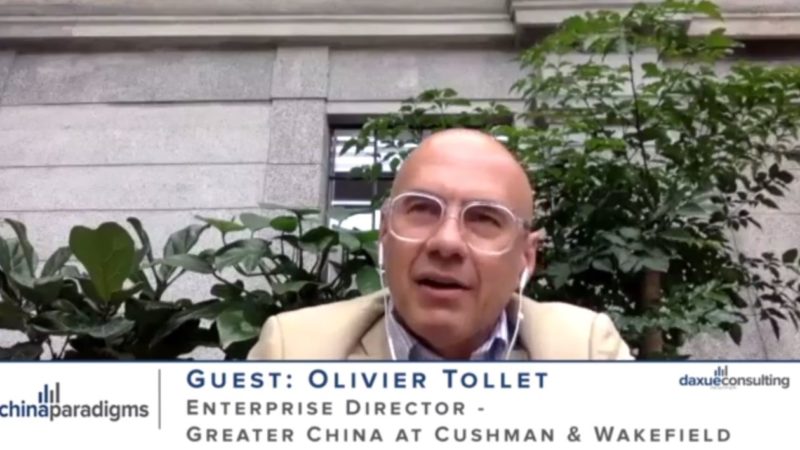
Olivier Tollet: Everywhere. After joining Cushman, I was very surprised because I’m currently in office in High Road. I was very surprised to see the big data in the real estate business in China. IoT is everywhere. Even construction is using what they call the BIM, the Building Integrated Modeling. When I talked with some colleagues in Europe, they told me they are thinking of using this kind of huge big database for building maintenance. It’s part of our plans, but in China, it’s already happening. All the components of a building are registered in a huge database. It takes two to three years of manpower to build up this kind of huge database with all the components, so even the small pipes or pumps are recorded inside. It’s in 3D, and you have all the information and components of the building.
I saw some facility management people navigating inside the building, using their software, clicking on one small part of the building, and seeing if this pump has been maintained that day or the maintenance report. It looks like something little bit futuristic, but it’s already happening here in China. It’s quite surprising. If you also take some hot topics like workplace strategy as well, when we are leasing some new spaces to companies, they also conduct some studies to arrange their workplace according to which place they should dedicate to individual workstations, a collaborative place, common areas, pantries and so on. This kind of studies now can be made very easily, because they have a lot of data with the badges of their staff, so they can know precisely who is entering the building during which hours. They can have sensors on the desk to know precisely who is occupying which desk at what time and so on. You can arrange after space and optimize your area according to the current usage of your space.
Five years ago, people in the real estate business in China were only looking at square meters, and now you are telling people that you don’t need 1,000 square meters, but only 800 square meters, because you only need to dedicate this percentage for individual workstations, this percentage for collaborative space and so on. We have entered a very advanced age of designing and space allocation for offices. Technology is now everywhere. When it makes sense and has some clear output on optimization and business orientations, it is definitely used.
Matthieu David: You talked in some articles published on LinkedIn, and you began to mention a little bit about this new way of using space, offices, interacting with your office like co-working, co-living and interacting with retailers in China like pop-up stores. The link between all of them is sharing. You don’t rent the entire space. For co-working, you just rent a specific desk. For co-living, you rent a space, because you like the standards of living, security, and services they can provide to you. Retailers in China open a pop-up shop because they don’t want to pay for the price of rent for one year or two years and put a deposit of two or three months to start the business. Could you share about those trends which are within the sharing economy, co-working, co-living, pop-up shop?
Olivier Tollet: If we have to find common ground, I think there is a feeling of belonging to a community and becoming more efficient by belonging to this community. The world is more open. The competition is a little bit fiercer than a few years ago. The cycles also are a little bit shorter. You’re looking at joining forces, advice, solutions, sharing some smart ideas. Solid, definite, long-term options are no longer what people are looking for. People are more looking for working in a project team, finding the right competencies at the right time, and being able to tackle their issues in the most efficient way. They don’t look for big organizations. They just want to identify the right people who can help them solve their problems in a quick and efficient way.
Matthieu David: It makes sense for co-working space and co-living space. You want to be with people whom you have links with. What about pop up shops? Do you see them as a real real estate business in China now? Do you think that there are strategies from retailers in China building at the pop-up shop? Is this something accidental? From time to time, there are new pop-up shops, but they are not built on a strong strategy.
Olivier Tollet: For me, pop-up shops should be part of a broader strategy. They can be good leverage for retailers in China, especially if they want to test a product or approach a specific client because they don’t have to bear the burden of a shop for that. A pop-up shop can do both by the way, offline and online. It can be a part of a test and trial strategy. You can also recruit customers or colleagues during a pop-up shop for another step of your strategy. I don’t see it as a final stage, but inside a more global strategy, I definitely believe it can make sense.
Matthieu David: My concern about the pop-up shop is that there is no platform for retailers in China to set up your shops. I don’t think there’s any easy way to do it, except contacting the malls, department stores, cities or districts to understand if they’re going to have an event or something going on somewhere else. Do you have any experience of it?
Olivier Tollet: Some of the developers and landlords are more experienced and keener on doing and promoting pop-up shops. Maybe some of them are quite advanced on this. Pop-up shops and malls can find common ground because shopping malls today have a challenge. They have to rely much more on experience or animation. They cannot be the same as 5 or 10 years ago. They have to renew themselves. Pop-up shops for them can also be a way to appear differently every 15 days or every month. It’s also for them a smart way to make people come again to say that next month; we will be different because we will have new retailers in China. Some malls are already playing this, but maybe not all of them. There should be something a little bit more institutionalized that pop-up stores could become a segment of shopping malls to say we have some place that will be turning thematic. The reason why it’s a little bit fragmented and chaotic today is that it requires a lot of energy from the shopping mall. Maybe they don’t have the team to manage this kind of spaces.
Matthieu David: Still looking for the Airbnb of pop-up shops.
Olivier Tollet: Yes, exactly. It may be one direction for the future of the retail industry in China because both retailers in China and malls have the interest to work in this direction.
Matthieu David: The last question is we know that when Decathlon, for instance, started selling in China, they sold pants. But actually, the Chinese don’t wear pants in the countryside or camping, but they are using them in the park to protect from the sun. I would like to know if you have some stories like these at Carrefour, where a product became something different from what you were expecting, or something very surprising that you witnessed in China. The same as P&G, in order to enter the Chinese market, they advertised to those “A Yi” who were leading Tai Chi in the morning to advertise their products, because they were KOL, Key Opinion Leaders at that time. Do you have some funny, interesting, surprising stories to share?
We have surprising stories about wine when Carrefour introduced wine in China and making it more visible or imported products, and attitudes or behavior in the shop like Ikea, where you saw some Chinese are sleeping on the bed, and some other stories.
Olivier Tollet: What always surprises me in the shops, especially at fresh sections, is people sorting the dry goods. Some are sorting the raisins like the dry grapes. They are sorting them one by one. I don’t know how much time they need to get 500 grams of plastic bags. They are usually some old grandpas and grandmas, and it happens almost in every shop that I visited at the time. They are very careful. They got the best of our assortment, but they spent one hour in front of them selves. Part of the success of Carrefour at the time lies in the cultural proximity, the love for food actually. Because even though we are very local, French and Chinese people love eating and food. Whenever we do wine tasting or French imported products tastings, even when people don’t know how to eat this kind of product or how to drink wine, of course, we still have the same people mixing wine with some soft drinks, but at least there is the same passion for food and drinks, and they are willing to try and taste. This is one of the common passions between French and Chinese people.
Another surprising thing was when I started Easy Carrefour, I really insisted on having some wine by the plastic glass imported from France. The cost was rather high because it was something like 38 RMB per glass. It makes a little bit high cost, but actually, it was a hit, because it was still a way for a young Chinese couple to discover wine. It maybe was not very fantastic quality wine, but it was a hit, and we were short of glasses of wine. A lot of young Chinese couples still bought two cups of wine to try at dinner back home. It was a nicely-designed glass, and everybody was saying. We are not going to sell, because it’s too expensive. It was a way to discover and access the French wine for young Chinese couples. It was a part of the unexpected successes.
Matthieu David: Very interesting. Thanks for your time. I hope you enjoyed the talk. I hope everyone enjoyed it as well. Bye, everyone.
Olivier Tollet: My pleasure. Bye, bye Matthieu. Bye, everyone.
China paradigm is a China business podcast sponsored by Daxue Consulting where we interview successful entrepreneurs about their businesses in China. You can access all available episodes from the China paradigm Youtube page.
Do not hesitate to reach out our project managers at dx@daxue-consulting.com to get all answers to your questions


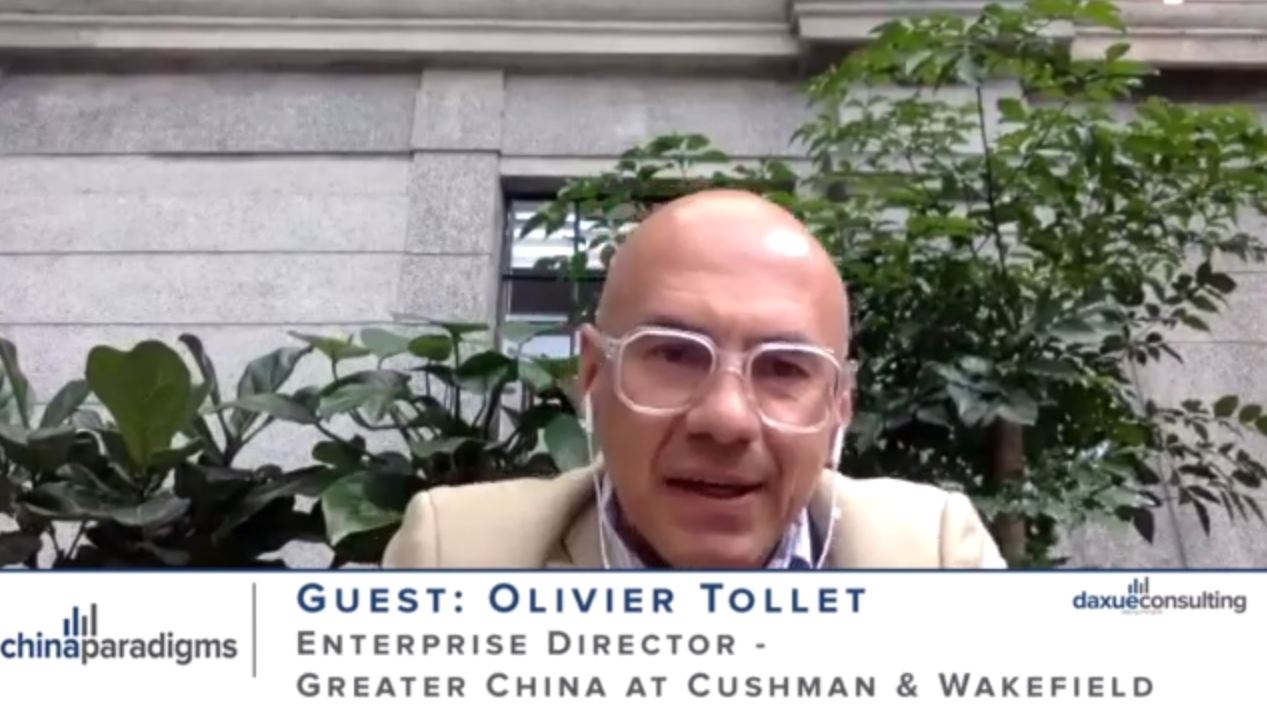
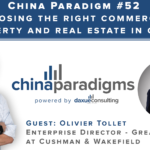

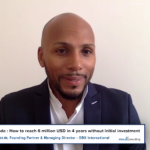
![[Podcast] China paradigm #2: How to reach 6 million USD sales without initial investment in the real estate industry in China](../wp-content/uploads/2018/05/501527244041_.pic_hd-150x150.png)

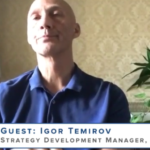
![[Podcast] China paradigm episode #11: How to successfully increase the number of retail shops in China by five-fold](../wp-content/uploads/2018/11/Cover-Episode-11-150x150.jpg)





